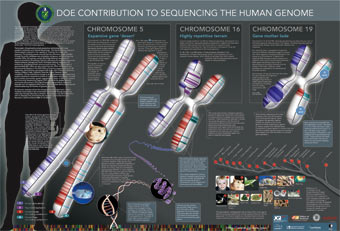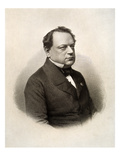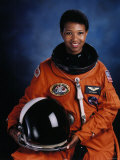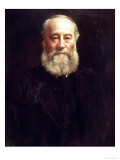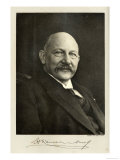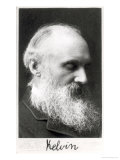|
|
|
|
|
|
|
|
|
|
|
|
|
|
SCIENCE:
PHYSICS & CHEMISTRY
|
|
|
|
|
|
|
|
|
|
|
|
|
|
|
|
|
|
|
 |
|
|
|
|
|
|
Shirley Jackson
b. 8-5-1946; Washington, DC
Physicist Shirley Jackson, the first African-American to earn a Ph.D from the Massachusetts Institute of Technology, worked at Fermilab, CERN, and Bell Laboratories. She has taught at Stanford, Aspen Center for Physics, and Rutgers, currently serving as President of Rensselaer Polytechnic Institute. Jackson is also the first woman and first African-American to serve as Chairman of the U.S. Nuclear Regulatory Commission.
• Women Scientist List
|
|
|
|
Francois Jacob
b. 6-17-1920; Nancy, Meurthe-et-Moselle, France
Biochemist Francois Jacob was shared the 1965 Nobel Prize in Physiology or Medicine with Jacques-Lucien Monad and Andre Lwoff “for their discoveries concerning genetic control of enzyme and virus synthesis”.
|
|
|
|
Moritz Herbert von Jacobi
b. 9-21-1801; Potsdam, Prussia
d. 3-10-1874; St. Petersburg, Russia
Engineer, physicist, and professor Moritiz Herbert von Jacobi worked with electric motors, wire telegraphy, and electrotyping (also known as galvanoplasty, a chemical method of making printing plates by electroplating- 1838).
Moritz younger brother was mathematician Carl Gustv Jacob Jacobi.
|
|
|
|
|
|
|
James Prescott Joule
b. 12-24-1818; Lancashire, England
d. 10-11-1889
Joule was the English physicist who discovered the relationship between heat, electricity and mechanical work. The International System of Units (SI) derived unit of energy, the joule, is named after him, and Joule's laws concerning the flow of current through a resistance and the heat dissipated. He also worked with Lord Kelvin to develop the absolute scale of temperature.
• Biography of James Prescott Joule
|
|
|
|
Percy Lavon Julian
b. 4-11-1899; Montgomery, AL
d. 4-19-1975; Illinois
Research chemist Percy Lavon Julian was a pioneer in the chemical synthesis of medicinal drugs from plants and during his lifetime he received more than 130 chemical patents.
He was one of the first African-Americans to earn a doctorate in chemistry (after St. Elmo Brady and Edward M. A. Chandler) and he also taught chemistry at the university level.
|
|
|
|
Heike Kamerlingh-Onnes
b. 9-21-1853; The Netherlands
d. 2-21-1926
Physicist Heike Kamerlingh-Onnes was the first to liquify helium (1908), at the time the lowest temperature on Earth, and in 1911 described the new state of “superconductivity”.
Onnes was awarded the 1913 Nobel Prize in Physics for “his investigations on the properties of matter at low temperatures which led, inter alia, to the production of liquid helium.”
• The galvanic circuit investigated mathematically by Georg Simon Ohm
|
|
|
|
Sir William Thomson, Lord Kelvin
b. 6-26-1824; Belfast, Ireland
d. 12-17-1907; Largs, Scotland
William Thomson was an engineer, inventor who was knighted given the title Lord Kelvin for his achievements which included more than 600 scientific papers, 70 patents and critical input in the laying of the transatlantic cable.
The temperature measurement (Kelvin scale) is named for him. He is also remembered for grossly underestimating the age of the Earth, that making the statements that “Heavier-than-air flying machines are impossible,” (1895) and the “Radio has no future,” (1897).
• Lord Kelvin and the Age of the Earth
|
|
|
|
Hans Adolf Krebs
b. 8-25-1900; Hildesheim, Germany
d. 11-22-1981; Oxford, England
Physician and biochemist Hans Adolf Krebs shared the 1953 Nobel Prize in Physiology or Medicine “for his discovery of the citric acid cycle” (Krebs cycle). The 1953 Prize was shared with Fritz Lipmann.
|
|
|
|
Thomas Kuhn
b. 7-18-1922; Cincinnati, OH
d. 6-17-1996
Physicist Thomas Kuhn wrote on the history of science, bringing the idea of “paradigm shift” into popular consciousness.
Thomas Kuhn quotes ~
• “The crises of our time, it becomes increasingly clear, are the necessary impetus for the revolution now under way. And once we understand nature's transformative powers, we see that it is our powerful ally, not a force to feared our subdued.”
• “Almost always the men who achieve these fundamental inventions of a new paradigm have been either very young or very new to the field whose paradigm they change.”
• “Scientific development depends in part on a process of non-incremental or revolutionary change. Some revolutions are large, like those associated with the names of Copernicus, Newton, or Darwin, but most are much smaller, like the discovery of oxygen or the planet Uranus.”
|
|
|
|
Nicholas Kurti
b. 5-14-1908; Budapest, Hungary
d. 11-24-1998
The physicist Nicholas Kurti enthusiastically applied scientific knowledge to culinary endeavors such as his talk at the Royal Society titled “The physicist in the kitchen”. Kurti amazed the audience by using the recently invented microwave oven to make a “Frozen Florida” (cold outside, hot inside) the reverse of a “Baked Alaska”.
|
|
|
previous page | top | next
Famous Chemist & Physicists List | a | b | c | d-e | f | g | h | I-J-K | l | m | n-o | p | q-r | s | t | u-z
|
|
I have searched the web for visual, text, and manipulative curriculum support materials - teaching posters, art prints, maps, charts, calendars, books and educational toys featuring famous people, places and events - to help teachers optimize their valuable time and budget.
Browsing the subject areas at NetPosterWorks.com is a learning experience where educators can plan context rich environments while comparing prices, special discounts, framing options and shipping from educational resources.
Thank you for starting your search for inspirational, motivational, and educational posters and learning materials at NetPosterWorks.com. If you need help please contact us.
|
|
|


